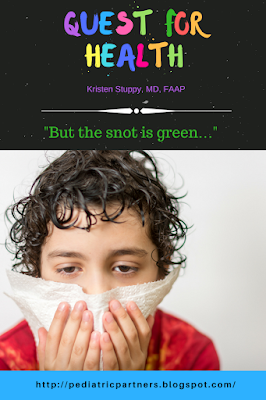My last post of 2012 was my Top 10 Posts of 2012. I think I'll keep the tradition going with the Top 10 of 2013.
 |
| photo source: Shutterstock |
If you don't want to miss a post, be sure to sign up for an e-mail subscription on the right!
From #10 to #1:
10. My Child's Cough and Breathing Sounds Like… is a collection of videos I compiled to help parents describe their child's cough.
9. Allergy Tips reviews ways to avoid allergens when possible and how to treat symptoms.
8. Flu Vaccine 2013: The Story Unfolds discusses how coding and billing issues impacted our office use of flu vaccines this season.
7. But the Snot Is Green… once again argues why the color of mucus does not make the diagnosis of bacterial sinusitis and gives information on treating colds and coughs.
6. To Tamiflu or Not to Tamiflu might be a little intense for some readers because it reviews the research on Tamiflu risks and benefits. I am happy it is among the top 10 because I want people to see that Tamiflu isn't that miraculous of a drug for influenza. I get far too many requests for it this time of year.
5. Flu Shot Information 2013-14 Season explains the different types of influenza vaccine available for the season.
4. Help! My Child Has ______ Up His Nose! shares a "secret" tip I use to get some unwanted objects out of a child's nose.
3. Screen Free Week is a challenge to readers to go Screen Free for a week. I have no idea why it is ranked so high. That is a surprise to me.
2. Cough Medicine: Which One's Best reviews various cough medicines and other treatments of cough.
1. Generic Concerta Not Working Like the Brand Used To? was read about 10 TIMES as much as any other post. It was found most often by a search engine, not direct shares, which tells me that many families are struggling with this issue. This is the post I am most passionate about. Any of my ADHD patients who are treated with Methylphenidate ER/Concerta know how angry I am that the FDA allows this substitution. I am thankful that the blog can help spread the word so that parents who are concerned about their child's sudden altered response to a medication can learn what might be the cause. I had so many updates to the original post, I wrote a follow up: Update on generic Methylphenidate HCl ER.
Blogs that missed the Top 10 that I wish more people would read include:
Evolution of Illness - I wish people would read this because we often fall into the trap of wanting a quick fix. Too many parents bring kids into the doctor for a fast remedy only to find that there isn't one. Resolution of illness takes time. Sometimes kids get worse, only to have the parent accuse a doctor of missing something. It happens to all good docs once in awhile…
First Period Q&A with a Tween - I wish people would find this one because it has questions every young lady thinks about but is often afraid to ask.
It's [Sports, School, Camp, Yearly] Physical Time - I wish people would read this so they understand the value of well exams and the scheduling constraints most pediatricians face. Don't call at the last minute!
Insurance Confusion - I wish people would read this because dealing with insurance is one of the most stressful parts of my job. I want people to learn about insurance to avoid financial surprises and to be responsible with insurance use.
Private Discussions with the Pediatrician - I wish people would read this because I am often uncomfortable (and sad for a child) when a parent wants them to leave the room for us to discuss something privately. Pre-planning with a quick phone call or secure message before the visit can save the child from excess worry.
What kids need to be able to do to leave the nest - This is one of my favorites because it was written at a very emotional point of my life. My kids are growing up and I reflected on what I really want them to know.
New Ideas
While most of my blogs were article-style writings, I introduced a few different types of blog this year.
My first (and to date only) attempt at a video blog was Nutrition For the Picky Eater. It was born from a talk I gave at an ADHDKC.org parent meeting.
I also did a picture blog with Lawn Mower Safety.
I had one guest blogger. Sleep expert, Kerrin Edmonds, wrote Common Sleep Myths.
Busy times…
April was my busiest month blogging. Seven posts that month. It tends to be a slow month in the office. Ironically it was also Screen Free Week, a time I should have been off the computer!









